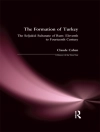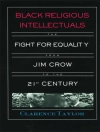The continual, unpredictable, and often violent ‘traffic’ between identities in colonial and postcolonial India is the focus of Parama Roy’s stimulating and original book. Mimicry has been commonly recognized as an important colonial model of bourgeois/elite subject formation, and Roy examines its place in the exchanges between South Asian and British, Hindu and Muslim, female and male, and subaltern and elite actors. Roy draws on a variety of sources—religious texts, novels, travelogues, colonial archival documents, and films—making her book genuinely interdisciplinary. She explores the ways in which questions of originality and impersonation function, not just for ‘western’ or ‘westernized’ subjects, but across a range of identities. For example, Roy considers the Englishman’s fascination with ‘going native, ‘ an Irishwoman’s assumption of Hindu feminine celibacy, Gandhi’s impersonation of femininity, and a Muslim actress’s emulation of a Hindu/Indian mother goddess. Familiar works by Richard Burton and Kipling are given fresh treatment, as are topics such as the ‘muscular Hinduism’ of Swami Vivekananda.
Indian Traffic demonstrates that questions of originality and impersonation are in the forefront of both the colonial and the nationalist discourses of South Asia and are central to the conceptual identity of South Asian postcolonial theory itself.
The continual, unpredictable, and often violent ‘traffic’ between identities in colonial and postcolonial India is the focus of Parama Roy’s stimulating and original book. Mimicry has been commonly recognized as an important colonial model of bourgeois/el
Про автора
Parama Roy is Associate Professor of English at the University of California, Riverside.












